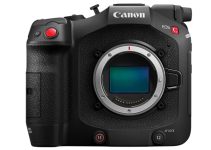Adobe Premiere Pro is loaded with so many outstanding features that it’s easy for a few to get lost in the mix. Even the most seasoned editor can discover seemingly hidden features in the software that could completely change the way they’ve done things for years. It’s best to give new things a try and not get stuck in our old ways, isn’t it?.
As Bill Nye The Science Guy once said, “Everyone you will ever meet knows something you don’t” and that is totally apparent when it comes to this extraordinary list that Cinecom.net has put together. These little tips and tricks can save you boat loads of time when you’re editing and finishing your projects inside of Premiere. Give them a shot and see how they help your workflow.
Adobe is quick to add new tools to their software, and even quicker at taking them away if they go unused or unnoticed. I’ll admit that I often don’t like to try or use new features in Premiere because sometimes they just disappear without warning – Adobe Story, for example. I get pretty set in my ways when I’m editing but I think it’s time to step outside of the box.
Let’s take a look at these hidden features and see how they could help us with our workflow.
Loudness Radar
- Go to the Audio Track Mixer
- In the Dropdown Menu above the track, select Special / Loudness Radar
- Click on the Effect to Bring Up the Menu
Next
- Go to Settings
- Target Loudness: -16.0 LKFS
- Radar Speed: 1 Min
Then
- Leave the Window Open
- Play Your Timeline
The Loudness Radar screen will visualize the total loudness of your sequence into a graph that looks something like a vectorscope. It moves clockwise, and the yellow indicates a segment of your project is mixed too high. This could be used on individual tracks or on the Master track when you’re finishing.
Loudness Radar could be a terrific way to visualize the overall levels of your sequence, identify problem spots, and preview a final mix without actually having to watch it again, for the 1,000th time. I’m definitely going to start using this in my timeline.
Project Shortcuts
Rather than importing an entire project into your current project, you can create a project shortcut. This allows you to quickly launch any project file inside of your current Premiere project and then browse through it. Adobe recommends using this feature to create a master project with sub-projects for Media, Sequences, Music, etc.
All you have to do is import the project as you normally would, and choose the 3rd option, Import as Project Shortcut, when the import screen pops up.
This could be very useful when working with a group of editors on a larger project, especially if you’re all pulling from the same media. This is very similar to an Avid Media Composer workflow on a series – in Avid, bins are files that aren’t locked to a specific project and everyone can have access to them.
Project Locking
Recently Adobe introduced Productions, which ultimately replaces the idea of having a Master Project and can incorporate new features like project locking – which locks your projects by user so they can’t be saved over while working on a server with a team. This can also be done by using a Master project, but the process isn’t as intuitive.
- Go to Edit / Preferences / Collaboration
- Project Locking: Select Enable project locking
Custom Metadata Property Tagging
You can create customized metadata properties for your clips. Simply right click on the Project panel’s columns and select Metadata Display. There you can add a custom property which will allow you to sort your footage more quickly.
I could definitely see using this to quickly tag a lot of footage for a specific reason. A description column is already available and I use that for most things, but you never know what could come up. In working with other people, though, this is something they might miss unless you specifically pointed it out to them.
Add Bins to the Effects Panel
If you right click in the empty space in the Effects panel, you can select New Custom Bin which you can use to sort the effects you use the most from the library.
I can’t believe I’m saying this right now, but this blew me away. I’ve spent so much time looking for the same 12 effects and I had no idea I could just put them all in one spot. I’ve already started using this feature.
Effect Preset Options
Once you’ve made any animation on an effect you can right click that property, and save it as a preset. When you do this you’ll be presented with 3 options:
- Scale – Applies the effect as a percentage to the entire length of the new clip
- Anchor to In Point – Sets the starting point of the animation to the beginning of the new clip, and maintains the animation timing.
- Anchor to Out Point – Sets the last keyframe of the animation to the Out point of the new clip, and maintains the animation timing.
Audio Track Keyframes
You can use the pen tool to create keyframes on the full timeline track just as you would with creating audio keyframes on a clip. Expand the track height to reveal the keyframes menu, and select Track Keyframe / Volume.
This feature will allow you to adjust the levels on the track rather than adjusting the volume of each individual clip during a final mixing session. This is definitely a massive time saver in specific situations, and I didn’t even know it was there.
Adobe Premiere was first launched in 1991 and has gone through a lot of changes in those 29 years. Look around a bit, and you’ll definitely find some neat tools you never knew were there. When you find something cool, come back around and let us all know!
[source: Cinecom.net]
Disclaimer: As an Amazon Associate partner and participant in B&H and Adorama Affiliate programmes, we earn a small comission from each purchase made through the affiliate links listed above at no additional cost to you.



